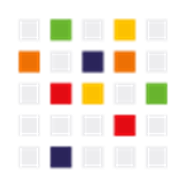Forgetting routines is an essential part of organizational learning. The research project investigates the mechanisms of forgetting in routines based on the division of labor. For this purpose, production processes are investigated in an experimental setting and the role of certain cues is determined.
The DFG priority program "Intentional Forgetting" (http://www.spp1921.de/) investigates the mechanisms of human, machine and organizational forgetting. The joint project with the Ruhr-Universität-Bochum "Intentional Forgetting, Routines & Retrieval Cues" investigates the context of forgetting in routines based on the division of labor. For this purpose, experiments are designed and conducted together with psychologists of the RUB. The goal is to determine which changes in the work environment promote forgetting of a routine in the manufacturing process.
The basis for this is the theory of cue-dependent forgetting. In this theory, certain cues in a person's environment trigger memories. Such cues can be other people as well as objects, sounds, or other contextual factors. The targeted removal of these cues, according to the hypothesis, facilitates the forgetting of routines.
In the experiments, the Industry 4.0 Application Center is investigating how the subjects' forgetting performance changes under different conditions. For this purpose, a real manufacturing process was transferred and modified to the extent that certain cues are present. First, a routine is learned, establishing a strong connection between what is learned and the cues present. This connection is solidified between experiments (three weeks) by a learning app. On the second experiment date, a second, slightly different routine is to be learned. In the process, the existing cues are also removed. It is then measured whether the originally learned routine continues to be recalled or whether the participants succeed in forgetting it. A variety of data is collected during the experiments. Every interaction with the system is logged in log files, the users' search behavior is recorded via eye trackers, and the starting conditions (creativity, verbal and mathematical skills) are collected via standardized questionnaires. Data evaluation is done via different procedures. First, the individual errors are identified and correlations are searched for. Furthermore, a sequence analysis can be used to determine at which points the process deviates from the target process and this can be traced back to the presence of the indications. The data is supplemented by the eye-tracker's gaze direction analysis, which proves that the participant is looking for certain clues on the second date.
Both routines will be represented in process models. Thus, it will be possible to represent forgetting in the processes themselves and to make its consequences assessable on process level. Due to the closeness to reality and the orientation on a real process, the results of the experiments can be transferred very well to actual transformations in production processes. The project thus makes a significant contribution to making transformation processes in companies more effective.
